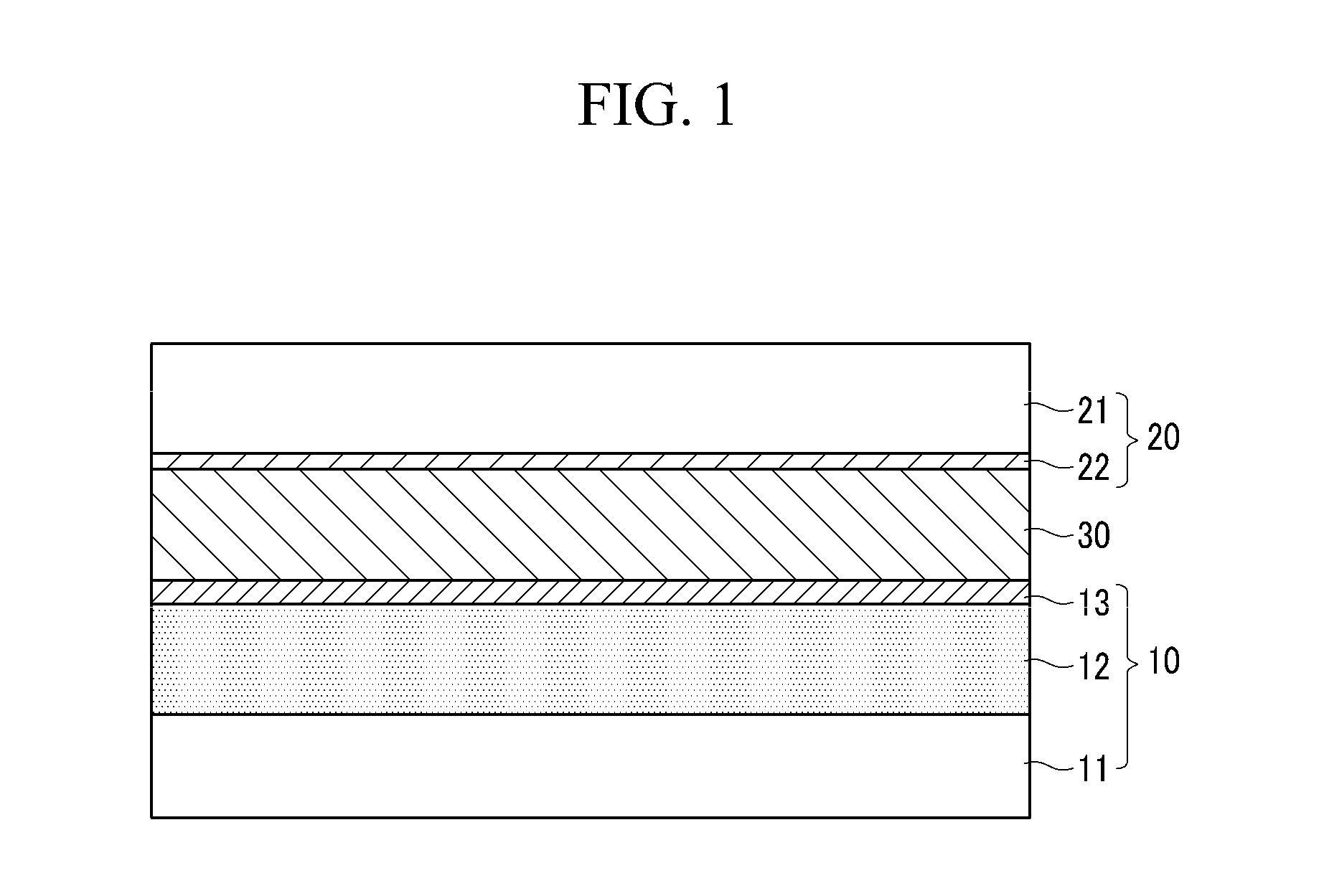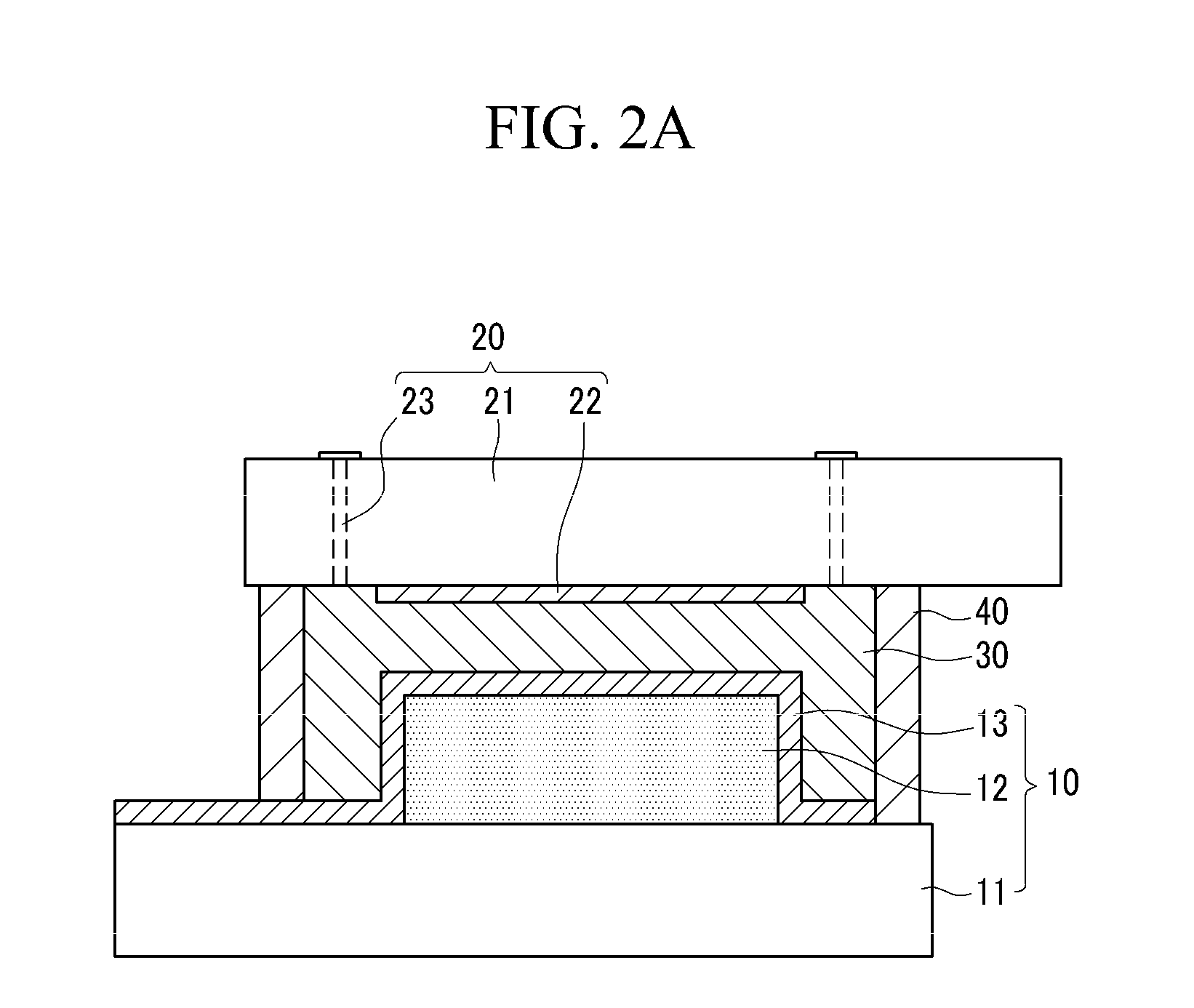Photo-electrode comprising conductive non-metal film, and dye-sensitized solar cell comprising the same
a technology of non-metal film and photoelectrode, which is applied in the direction of electrolytic capacitors, sustainable manufacturing/processing, and final product manufacturing, etc., can solve the problems of difficult commercialization difficult to ensure sufficient conductivity of titanium thin films, and low energy conversion efficiency of dye-sensitized solar cells. achieve the effect of advanced transmittance and high electrical conductivity
- Summary
- Abstract
- Description
- Claims
- Application Information
AI Technical Summary
Benefits of technology
Problems solved by technology
Method used
Image
Examples
example 1
Preparation of Photo-Electrode
[0074]First, as a substrate, a transparent glass substrate (thickness: 2 mm) was prepared. Afterward, a metal oxide nano-particle paste comprising 10 g of titanium oxide nano-particles (average particle diameter: 20 nm), 3 g of binder resin (ethyl cellulose), 1 g of dispersant (lauric acid), and 40 g of solvent (terpineol) was coated on the substrate using a doctor blade. Following this, the substrate was heat-treated at 500° C. for 30 minutes, so a porous membrane having titanium oxide nano-particles was formed on the substrate.
[0075]Thereafter, a TiN conductive ceramic film was deposited to an average thickness of 100 nm on the substrate by using magnetron sputtering. While maintaining base pressure of the chamber to 5.0×10−7 Torr or less, the volume ratio of N2 / (N2+Ar) was adjusted to mix pure Ar gas and N2 gas. An experiment was performed with the Ar gas atmosphere with the addition of N2 at 3 vol %, process pressure of 1 mTorr, a substrate temperat...
example 2
Preparation of Photo-Electrode
[0081]First, as a substrate, a transparent glass substrate (thickness: 2 mm) was prepared. Afterward, a metal oxide nano-particle paste comprising 10 g of titanium oxide nano-particles (average particle diameter: 20 nm), 3 g of binder resin (ethyl cellulose), 1 g of dispersant (lauric acid), and 40 g of solvent (terpineol) was coated on the substrate using a doctor blade. Following this, the substrate was heat-treated at 500° C. for 30 minutes, so a porous membrane having titanium oxide nano-particles was formed on the substrate.
[0082]Thereafter, a conductive oxide nano-particle paste comprising 12 g of tin-doped indium oxide nano-particles (average particle diameter: 21 nm), a dispersion mixture (ethylene glycol, 2 g, diethylene glycol monobutylether, 2 g, 3,6,9-trioxadecanoic acid, 1 g) and 2 g of solvent (EtOH, anhydrous) was coated on the porous membrane using spin-coating. Following this, the substrate was heat-treated at 600° C. for 30 minutes, so...
experiment 1
[0094]For each dye-sensitized solar cell prepared in Example 1 and Comparative Example 1, open circuit voltage, photocurrent density, energy conversion efficiency, and fill factor were measured as follows, and the results are summarized in the following Table 1 and FIG. 3.
[0095](1) Open circuit voltage (V) and Photocurrent density (mA / cm2):
[0096]Open circuit voltage and photocurrent density were measured with Keithley SMU2400.
[0097](2) Energy conversion efficiency (%) and Fill factor (%):
[0098]Energy conversion efficiency was measured with 1.5AM 100 mW / cm2 solar simulator (consisting of Xe lamp [1600W, YAMASHITA DENSO], AM1.5 filter, and Keithley SMU2400), and fill factor was calculated using the obtained conversion efficiency and the following Equation.
Fillfactor(%)=(J×V)maxJsc×Voc×100[Equation]
[0099]wherein J is a y-axis value of a conversion efficiency curve, V is an x-axis value of a conversion efficiency curve, and Jsc and Voc are intercepts of each axis.
TABLE 1OpencircuitPhoto...
PUM
 Login to View More
Login to View More Abstract
Description
Claims
Application Information
 Login to View More
Login to View More - R&D
- Intellectual Property
- Life Sciences
- Materials
- Tech Scout
- Unparalleled Data Quality
- Higher Quality Content
- 60% Fewer Hallucinations
Browse by: Latest US Patents, China's latest patents, Technical Efficacy Thesaurus, Application Domain, Technology Topic, Popular Technical Reports.
© 2025 PatSnap. All rights reserved.Legal|Privacy policy|Modern Slavery Act Transparency Statement|Sitemap|About US| Contact US: help@patsnap.com



